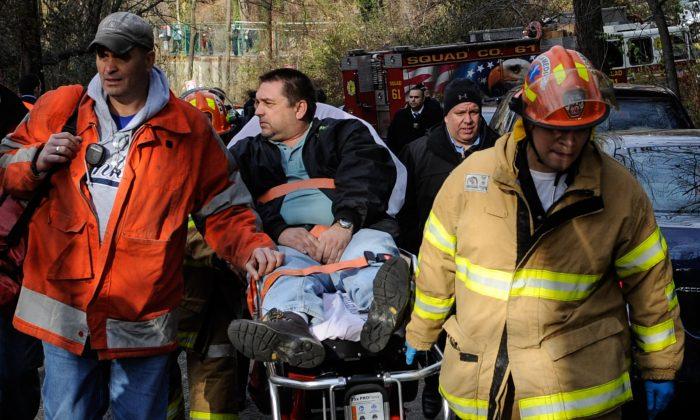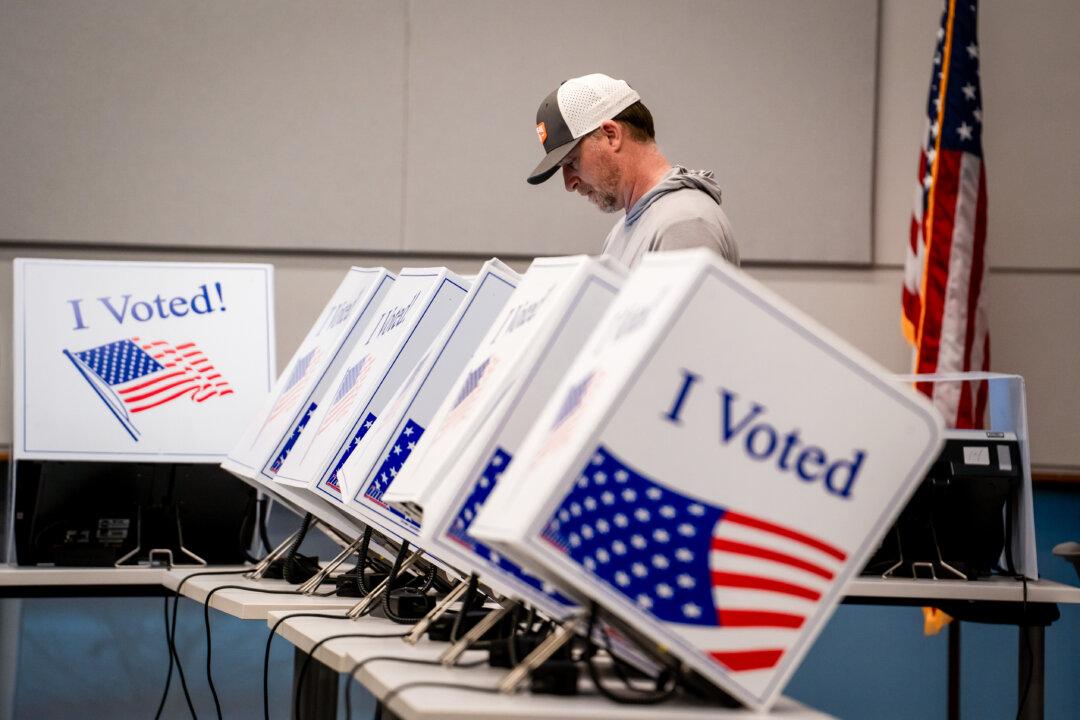NEW YORK—The revelation that the engineer of a Metro-North train nodded off as his train raced toward a sharp curve Sunday and derailed, killing four people, is fueling questions about whether automated crash-avoidance technology could have prevented the carnage.
William Rockefeller, the engineer, caught himself nodding at the controls before the train started to veer off its tracks and derailed in the Bronx, union leader Anthony Bottalico said Tuesday. Rockefeller “caught himself, but he caught himself too late,” Bottalico said, akin to a momentary lapse while driving a car.
Data from the event recorders recovered from the locomotive supports Bottalico’s statement. The throttle was reduced to idle and the brakes fully engaged seconds before the train derailed, plowed into the ground, and came to a stop inches from the Hudson River.
Shortly before the statement from the union official, Earl Weener, member of the National Transportation Safety Board, told reporters that an automated crash-avoidance technology, known as positive train control (PTC), has been proven to reduce the number of accidents and supplement human operation.
“It’s possible that PTC could have prevented it,” Weener said.
Safety officials have championed PTC technology for decades, but the railroad industry has sought to postpone having to install it because of the high cost and technological issues. Some safety experts said the tragedy might not have happened if Metro-North Railroad had the technology, and a lawmaker said the derailment underscored the need for it.
“This incident, if anything, heightens the importance of additional safety measures,” said Sen. Richard Blumenthal, a Democrat from Connecticut, which is also served by Metro-North. “I’d be very loath to be more flexible or grant more time.”
The train was going 82 mph as it entered a 30 mph turn Sunday morning and ran off the track, Weener said Monday. He cited information extracted from the train’s two data recorders. It takes about a quarter-mile to a half-mile to stop a train going 82 mph, according to Kevin Thompson, a Federal Railroad Administration (FRA) spokesman.
The speed stunned officials—“I gulped,” said Sen. Charles Schumer.
Investigators began talking to the train’s engineer, William Rockefeller, Monday and the interview resumed Tuesday evening, Weener said. The NTSB would not release the interview details until interviews with crew members, first responders, and passengers are concluded.
Bottalico’s revelation came after nearly all other possible causes were ruled out by the NTSB. Track conditions were ruled out Monday. On Tuesday afternoon, Weener told reporters that no anomalies have been discovered with the train’s breaking and mechanical systems.
Investigators examined data from the nine stops the train made prior to derailing near the Spuyten Duyvil station in the Bronx and did not discover any anomalies.
“Simply put, based on this data there is no indication that the break systems were not functioning properly,” Weener said.
Positive Train Control
PTC is designed to forestall the human errors that cause about 40 percent of train accidents and uses GPS, wireless radio, and computers, to monitor trains and stop them from colliding, derailing, or going the wrong way.
The transportation safety board has urged railroads to install PTC in some form since 1970, and after a 2005 head-on collision killed 25 people near Los Angeles, in 2008 Congress ordered railroads to adopt the technology by December 2015.
Metro-North has taken steps toward acquiring it but, like many railroads, has advocated for a few more years to implement a costly system that railroads said presents technological and other hurdles.
Grady Cothen, a former FRA safety official, said a PTC system would have prevented Sunday’s crash if the brakes were working normally. And Steven Ditmeyer, a former FRA official who teaches at Michigan State University, said the technology would have monitored the brakes and would not have allowed the train to exceed the speed limit.
“A properly installed PTC system would have prevented this train from crashing,” he said. “If the engineer would not have taken control of slowing the train down, the PTC system would have.”
The Metropolitan Transportation Authority, which runs Metro-North, began planning for a PTC system as soon as the law was put into effect, spokeswoman Marjorie Anders said. After some early-stage work such as buying radio frequencies, the MTA awarded $428 million in contracts in September to develop the system for Metro-North and its sister Long Island Rail Road.
But the MTA has advocated for an extension to 2018, saying it’s difficult to install such a system across more than 1,000 rail cars and 1,200 miles of track.
Engineer
The train’s engineer was working the second day of a five-day workweek on the day of the derailment, according to the NTSB. He has operated trains on the Hudson Line where the derailment occurred since Nov.17, making two round trips every day, five days a week. On Sunday, Rockefeller arrived to work on time and departed Poughkeepsie on schedule at 5:54 a.m.
Results of the alcohol tests for Rockefeller and the three other members of the crew came back negative. Drug tests are still pending, Weener said Tuesday afternoon.
Investigators have not yet reviewed data from Rockefeller’s cellphone. Engineers are allowed to carry cellphones but prohibited from using them during a train’s run.
Rockefeller’s emergency call was cited as the first after the train derailed at approximately 7:20 a.m. Sunday. He was taken to a hospital and treated for injuries.
The New York Police Department is conducting its own investigation with assistance from the Bronx district attorney’s office in the event the derailment becomes a criminal case.
“Billy is a very sincere guy. This is a man who is totally distraught by the loss of life, and he’s having a tough time dealing with that,” union leader Bottalico said.
Rockefeller, 46, has been an engineer for about 11 years and a Metro-North employee for about 20, he said.
Sunday Carnage
On Sunday, the train was about half full, with about 150 people aboard, when it ran off the rails while rounding a bend where the Harlem and Hudson rivers meet. The lead car landed inches from the water.
The dead were identified as Donna L. Smith, 54, of Newburgh; James G. Lovell, 58, of Cold Spring; James M. Ferrari, 59, of Montrose; and Kisook Ahn, 35, of Queens.
Some of the injured remained hospitalized Monday, including seven patients in intensive care at one hospital and two patients in critical condition at another.
Train Configuration
The train was configured with its locomotive in the back instead of the front. Weener said that is common, and a train’s brakes work the same way no matter where the locomotive is located. Ditmeyer said the locomotive’s location has virtually no effect on train safety.
Still, some people feel the configuration provides less protection for passengers because if the train hits something, there’s no locomotive in front to absorb the blow, said William Henderson, executive director of the Permanent Citizens Advisory Committee to the MTA, a riders’ advocacy group.
Repairs
Repair work on the latest derailment damage continued on Metro-North’s Hudson Line, which normally carries 26,000 weekday riders.
On Monday night, workers used a backhoe to push pieces of damaged track off to the side, and then broke them up for disposal. On Tuesday, dozens of workers in orange vests were hammering new tracks into ties. There was heavy equipment along the tracks; one worker pounded with a mallet.
The Associated Press contributed to this report.






Friends Read Free